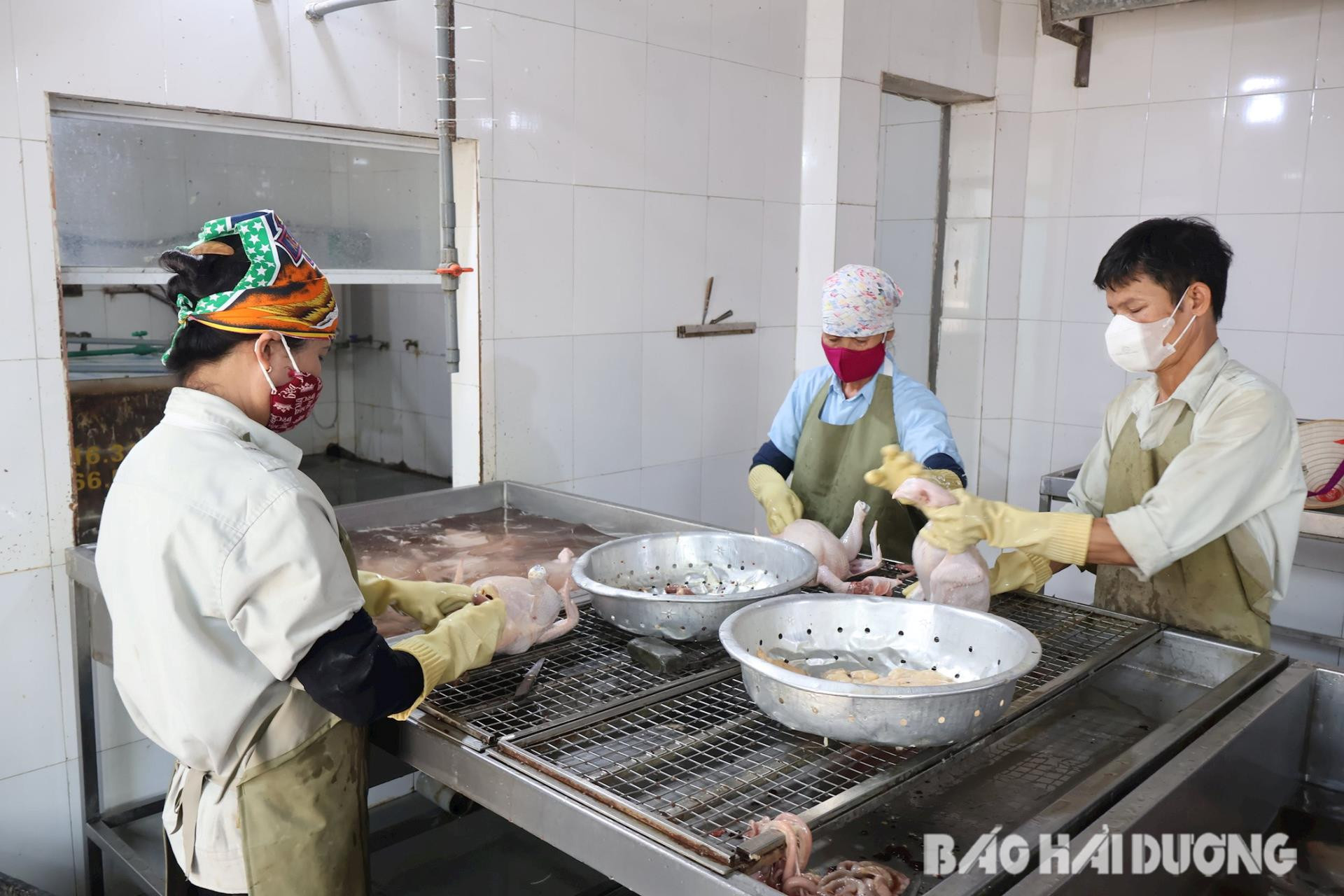
Thousands of small slaughterhouses
Mr. Nguyen Van Hung's farm in Hiep Cat commune (Nam Sach) raises nearly 100 pigs. All pigs are slaughtered by the facility itself before being brought to market. The small amount of slaughtering means no need to invest in facilities. This is the biggest advantage of small-scale slaughtering. However, it is followed by a series of problems related to the environment and food safety.
Mr. Hung shared: "Centralized slaughter is of course cleaner, but having to travel at night and long distances is both inconvenient and increases transportation costs. Every day, my family only slaughters 1-2 pigs to serve the needs of local people. During holidays and Tet, when people's demand increases, we can also take the initiative in supplying. Moreover, meat is slaughtered manually, without quarantine stamps, when brought to the market, it is still sold normally like industrially slaughtered meat."
Ve Market in Dong Tam Commune (Ninh Giang) is famous for its buffalo meat specialty. There are many small buffalo slaughterhouses in residential areas. According to the planning of the province and district, Dong Tam and Tan Huong communes have reserved more than 3 hectares to build a type II semi-industrial slaughterhouse with a capacity of 5-10 buffaloes and cows; 50-100 pigs, 200-300 poultry/day. However, it has not been implemented yet.
Currently, the construction of centralized slaughterhouses in the remaining districts is also very difficult. The main reason is that in many places, the area is large, transporting live cattle to the slaughterhouse, then transporting meat to the market, plus the slaughtering cost increases from 500,000 to 600,000 VND/head. Another reason is that the quarantine force in the localities is too thin, not meeting the requirements for quarantine and slaughter.
Small-scale slaughterhouses are often spontaneous, self-consumed, and closely related to people's living habits, making them difficult to manage and re-plan according to livestock industry regulations. The fact that these facilities exist right next to residential areas is a source of great threat to spread diseases, causing environmental pollution and food safety problems.
Currently, in Hai Duong province, there are thousands of small-scale slaughterhouses using manual methods that are not licensed by local authorities. Meanwhile, the funding source for building centralized slaughterhouses for livestock and poultry is very large, up to tens of billions of VND, especially the cost of waste and wastewater treatment to ensure environmental hygiene. Therefore, centralized slaughterhouses still find it difficult to compete with small-scale slaughterhouses.
Businesses are not interested in investing
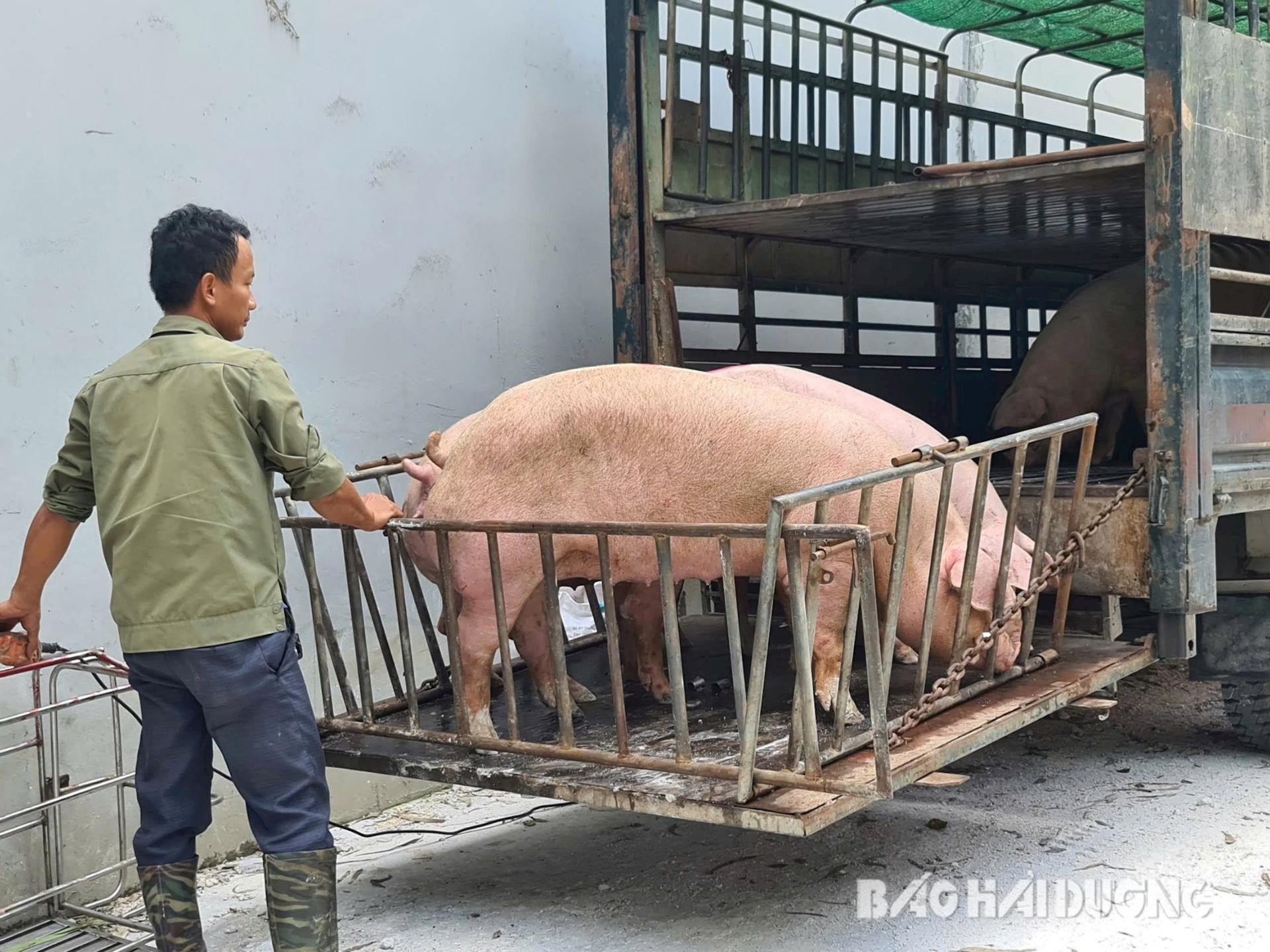
The poultry slaughterhouse of Chicken PT Company Limited in Cam Phuc Commune (Cam Giang) is one of the few slaughterhouses that basically meets environmental and food safety requirements in the province. This facility was supported by the LIFSAP Project to be invested in and built in 2016 with a slaughtering capacity of 3-5 tons/day. However, this facility only serves the slaughter of poultry from the company's farms and affiliated farms. Poultry is slaughtered, processed, frozen and transported to collective kitchens in the province.
Ms. Nguyen Thi Tuyen, manager of the poultry slaughterhouse of Chicken PT Company Limited, said that currently, many slaughterhouses located in other provinces and cities "died young" after only a short period of operation because when switching to industrial slaughter, the slaughtering cost will be higher and must be subject to strict management of the food production process. "We have the potential to invest, upgrade and expand the slaughter line. However, when expanding the scale, the enterprise will have to compete with traders of small-scale slaughterhouses. Enterprises have to bear many costs and fees, the products brought into slaughter must be strictly controlled in quality while traders do not have to pay any costs, making it very difficult to control quality.
In 2017, the People's Committee of Hai Duong province approved the planning of concentrated livestock and poultry slaughterhouses until 2025, with a vision to 2030. The general goal of the province is to gradually eliminate small-scale slaughterhouses and form concentrated livestock and poultry slaughterhouses; provide safe and hygienic animal products for domestic consumers and export, contributing to improving the quality of livestock products in the province. At the same time, protect the environment and prevent diseases for livestock and poultry.
Accordingly, by 2025, Hai Duong will maintain 2 pig slaughterhouses, Thang Loi Company Limited (Hai Duong City) and Huong Quynh Dang Joint Stock Company (Ninh Giang); planning to develop 4 type I industrial slaughterhouses with an area of about 2 hectares each. The province will also build 35 type II semi-industrial facilities with an area of 0.5 - 1 hectare. Establish 102 type III concentrated manual facilities to ensure that the output of fresh meat (excluding piglets) slaughtered centrally accounts for about 50% of the output consumed in the province and about 65% of the output consumed outside the province.
The Government also issued Decree 57/2018/ND-CP on mechanisms and policies to encourage businesses to invest in rural agriculture . Accordingly, livestock and poultry slaughterhouses will be supported with 60% of investment costs and not more than VND 15 billion/project to build infrastructure for waste treatment, transportation, electricity, water, factories and purchase equipment within the project fence.
However, in reality, up to now, apart from 2 pig slaughterhouses for export, the whole province has only 4 livestock and poultry slaughterhouses. Of which, there is only 1 livestock and poultry slaughterhouse concentrated in Thach Khoi ward (Hai Duong city). The remaining 3 slaughterhouses all serve the poultry slaughtering of the investing enterprises themselves.
In reality, due to many objective reasons, not many businesses have invested in livestock slaughtering chains. Businesses that have invested capital are also facing difficulties, especially in the districts. The direction and coordination between levels and sectors is not yet synchronous, and the authorities of some localities in districts and communes have not really paid attention to food safety, so the information, propaganda and dissemination of laws to the people are still limited. Policies to encourage and support the slaughtering, trading and transportation of livestock and poultry are not yet synchronous and effective.
Mr. Vu Van Hoat, Head of the Hai Duong Animal Husbandry and Veterinary Department, said that according to the plan, Hai Duong has reserved 65 hectares of land to build a centralized slaughterhouse. However, the biggest difficulty at present is that very few businesses want to invest in this field. Investment at the district level also has many shortcomings because the communes are far apart. If the slaughter is centralized, many costs will increase, especially transportation costs. In fact, many businesses that have invested in the field of slaughtering livestock and poultry are operating inefficiently while the investment costs are high. People's habit of consuming fresh food also makes businesses not interested in investing...
In the context of consumers increasingly paying attention to food safety and hygiene, the construction of centralized slaughterhouses will play an important role in ensuring food safety from the breeding to processing stages. Doing a good job of centralized slaughterhouses is the key to improving the quality of livestock in the direction of "self-awareness from the root" of the breeding households, which is also the premise for building a clean processing chain.
Difficulties in animal quarantine
Currently, in Nam Hong commune (Nam Sach), there are more than a dozen small-scale slaughterhouses for livestock and poultry. Slaughter activities mainly take place at night, and the slaughterhouses are located far apart, making them difficult to control.
Slaughter operations in unsanitary conditions can easily cause meat to become contaminated, affecting meat quality and food safety. Previously, food safety control was carried out at the market, but now it is not possible due to lax management.
The construction of concentrated livestock and poultry slaughterhouses creates favorable conditions for veterinary staff to quarantine animals, ensure food safety and hygiene for consumers, and ensure rural environmental hygiene.
Nguyen Thi Thuy, veterinary officer of Nam Hong commune (Nam Sach)
Ensuring meat quality in traditional markets
Recently, I have seen many cases of food, especially chicken and pork in the markets, being found to be contaminated by bacteria by the authorities. The uncontrolled slaughtering process, the widespread sale of food, and the lack of preservation are also some of the main causes of food safety problems.
To improve the quality of livestock and poultry meat, the authorities must strictly control slaughterhouses. Strengthen inspection and handling of small, spontaneous animal slaughterhouses; resolutely close down sites that do not meet standards and regulations, causing environmental pollution. At the same time, direct market management boards to develop regulations and strictly prohibit the trading of livestock and poultry meat without a slaughter control mark from veterinary agencies.
Pham Thi Hong, Quynh Khe village, Kim Xuyen commune (Kim Thanh)
Source: https://baohaiduong.vn/xay-dung-co-so-giet-mo-tap-trung-o-cac-huyen-bai-toan-kho-giai-392414.html























![[Photo] Nghe An: Provincial Road 543D seriously eroded due to floods](https://vphoto.vietnam.vn/thumb/1200x675/vietnam/resource/IMAGE/2025/8/5/5759d3837c26428799f6d929fa274493)



































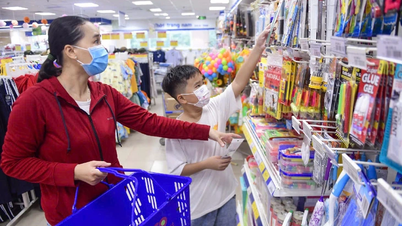





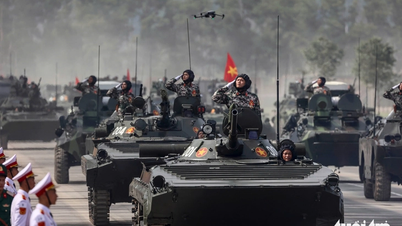






















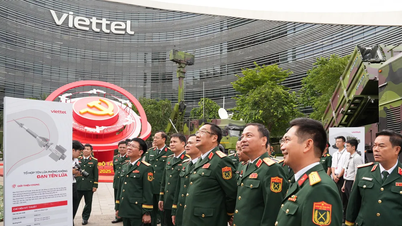



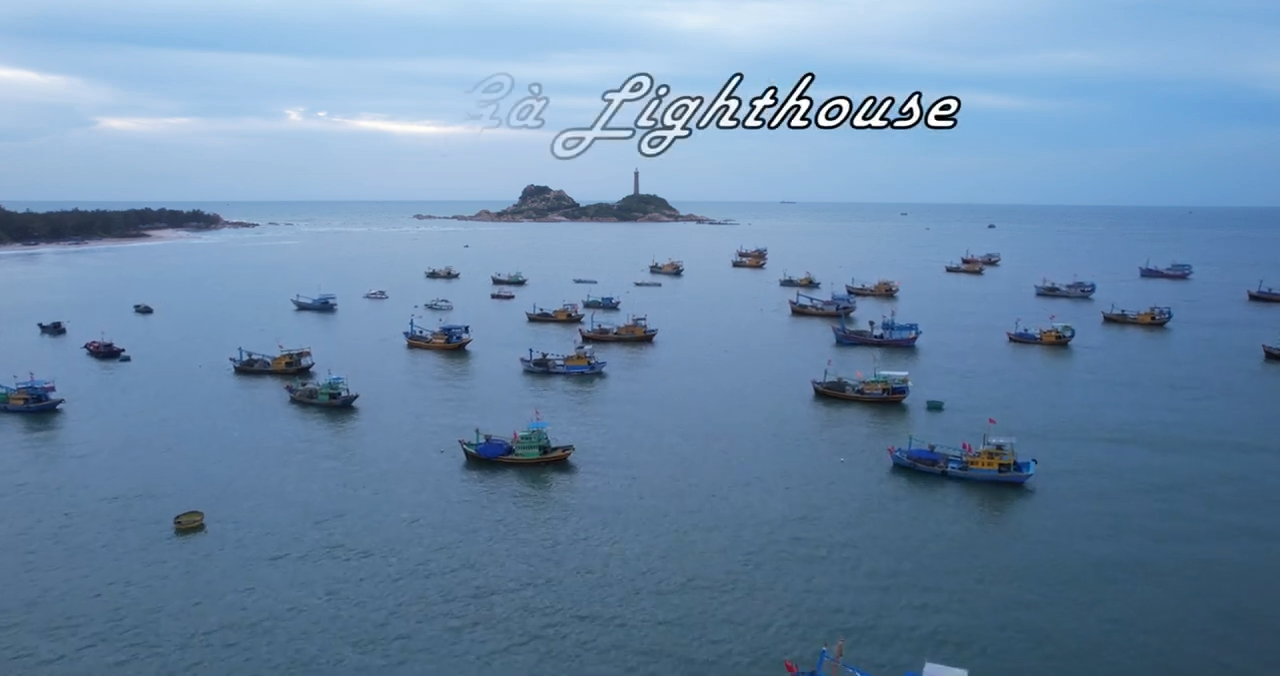



Comment (0)